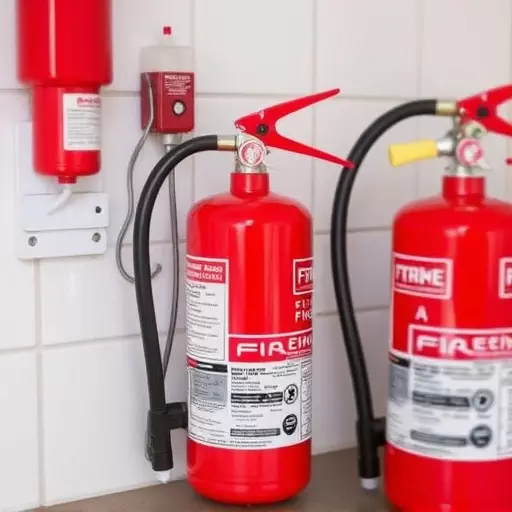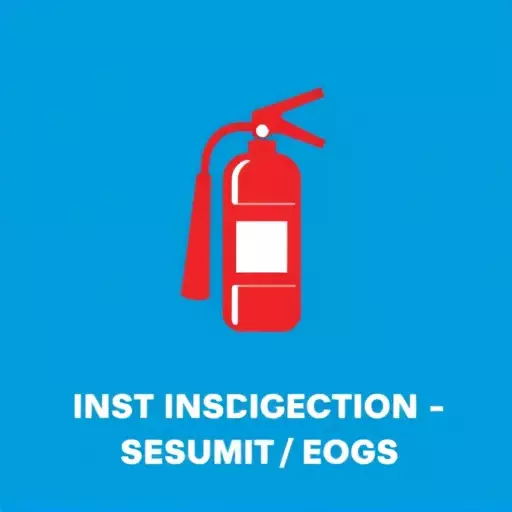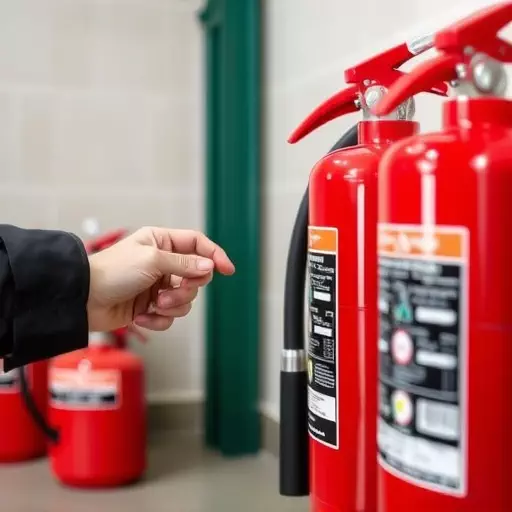Fire extinguishers in Jacksonville businesses and homes require regular maintenance through monthly and annual inspections. Monthly checks ensure high-risk areas are always ready, while certified professionals conduct annual reviews of functionality, pressure levels, and regulatory compliance. Both types of inspections are vital for emergency preparedness, safety code adherence, and maintaining accurate records and employee training on fire extinguisher use. Regular testing and replacement based on a detailed Fire Extinguisher Inspection Checklist (including pressure checks, corrosion signs, and expiration dates) prevent costly replacements and save lives by guaranteeing extinguishers' optimal performance during crucial initial response minutes.
Fire extinguisher inspections are crucial for ensuring safety in any Jacksonville establishment. While many businesses follow recommended annual or monthly checklists, common mistakes can compromise their effectiveness. This article delves into the nuances of fire extinguisher maintenance, exploring inspection frequencies, visual checks, pressure testing, record-keeping, and training. By understanding these aspects, you can optimize protection and avoid potential hazards, adhering to Jacksonville’s safety regulations. Implement a comprehensive fire extinguisher inspection checklist for peace of mind.
- Understanding Fire Extinguisher Inspection Frequencies: Monthly vs Annual
- Common Mistakes During Visually Inspecting Fire Extinguishers
- Checking Fire Extinguisher Pressure and Operation: What to Look For
- Maintenance Records and Training: Ensuring Compliance with Jacksonville Regulations
- The Importance of Regular Testing and Replacement for Optimal Protection
Understanding Fire Extinguisher Inspection Frequencies: Monthly vs Annual

Fire extinguishers are critical safety devices, and their proper maintenance is crucial for any Jacksonville business or home. Understanding the recommended inspection frequencies is essential to ensure they remain operational in an emergency. The two primary options are monthly and annual inspections, each with its advantages. Monthly fire extinguisher checks are ideal for high-risk areas, ensuring that extinguishers are always ready for use. This frequent evaluation identifies any potential issues, such as damage, corrosion, or low charge levels, allowing for swift resolution. It also helps to train staff on proper usage and maintenance, fostering a culture of safety awareness.
On the other hand, annual fire extinguisher inspections provide a comprehensive review by certified professionals. These thorough examinations cover all aspects, including functionality, pressure levels, and regulatory compliance. While less frequent than monthly checks, annual inspections are still vital for maintaining optimal equipment performance. They offer peace of mind, knowing that your fire extinguishers will operate reliably when needed most, while also ensuring adherence to local safety codes and regulations.
Common Mistakes During Visually Inspecting Fire Extinguishers

During visually inspecting fire extinguishers, common mistakes often occur that can lead to serious safety risks. One of the most frequent errors is neglecting to check the pressure gauge and the overall physical condition of the extinguisher. It’s crucial to ensure the pressure is within the recommended range, as indicated on the device’s label, and to look for any signs of corrosion, damage, or leakage. These visual cues can provide valuable information about the extinguisher’s readiness and potential need for maintenance or replacement.
Additionally, many inspections skip over examining the date of manufacture and the expiration date. Fire extinguishers have a limited lifespan, and their effectiveness decreases over time. A comprehensive fire extinguisher inspection checklist Jacksonville should include noting these dates and planning for replacement when necessary. Remember that regular monthly fire extinguisher inspections and annual maintenance, as per industry standards, are vital to ensuring these critical safety devices remain operational and effective in the event of an emergency.
Checking Fire Extinguisher Pressure and Operation: What to Look For

When conducting a fire extinguisher inspection in Jacksonville, one of the critical aspects to focus on is checking the pressure and operation of the device. This involves verifying that the gauge on the extinguisher shows it’s within the acceptable pressure range, typically between 10-12 bar (or 145-175 psi). A low reading may indicate a leak or a need for recharging, while a high reading could suggest issues with the relief valve.
Additionally, test the extinguisher’s operation by activating the trigger mechanism. The extinguisher should discharge evenly and cover the prescribed area as per its labeling. Look out for any signs of damage, corrosion, or leakage around the nozzle and hose. These elements are vital in ensuring the fire extinguisher is ready for use when needed, making monthly and annual fire extinguisher inspections in Jacksonville a non-negotiable part of your safety routine.
Maintenance Records and Training: Ensuring Compliance with Jacksonville Regulations

Maintaining fire extinguishers is not just about ensuring they’re readily available in case of an emergency; it’s also crucial for staying compliant with Jacksonville regulations. One common mistake many organizations make is neglecting to keep accurate maintenance records. This includes detailed logs of all inspections, repairs, and replacements, which are essential for demonstrating due diligence during audits. A well-kept fire extinguisher inspection checklist Jacksonville should be easily accessible and up-to-date, reflecting the frequency of inspections – both monthly fire extinguisher inspections and annual fire extinguisher inspections.
Training is another critical aspect often overlooked. Employees must be trained not just on how to use a fire extinguisher but also on the importance of regular maintenance. Ensuring that everyone understands their role in safety protocols can significantly reduce errors during an emergency. Staying current with Jacksonville’s regulations regarding these procedures isn’t just about avoiding penalties; it’s about fostering a culture of safety and preparedness within your organization.
The Importance of Regular Testing and Replacement for Optimal Protection

Regular testing and replacement are crucial aspects of maintaining optimal protection against fires in any building or facility. Many property owners and managers make the mistake of neglecting these essential tasks, often due to a lack of understanding or oversight. However, it’s vital to remember that fire extinguishers are designed to be effective during their critical first minutes of response, and their performance heavily depends on proper care and maintenance.
In Jacksonville and other areas, a comprehensive fire extinguisher inspection checklist should guide monthly and annual inspections. Monthly checks ensure that extinguishers are accessible, not damaged, and have not been tampered with. Annual inspections go deeper, testing the extinguisher’s pressure, operation, and overall functionality. Following this routine can prevent costly replacements and save lives by ensuring that fire extinguishers remain ready for immediate use when needed most.


